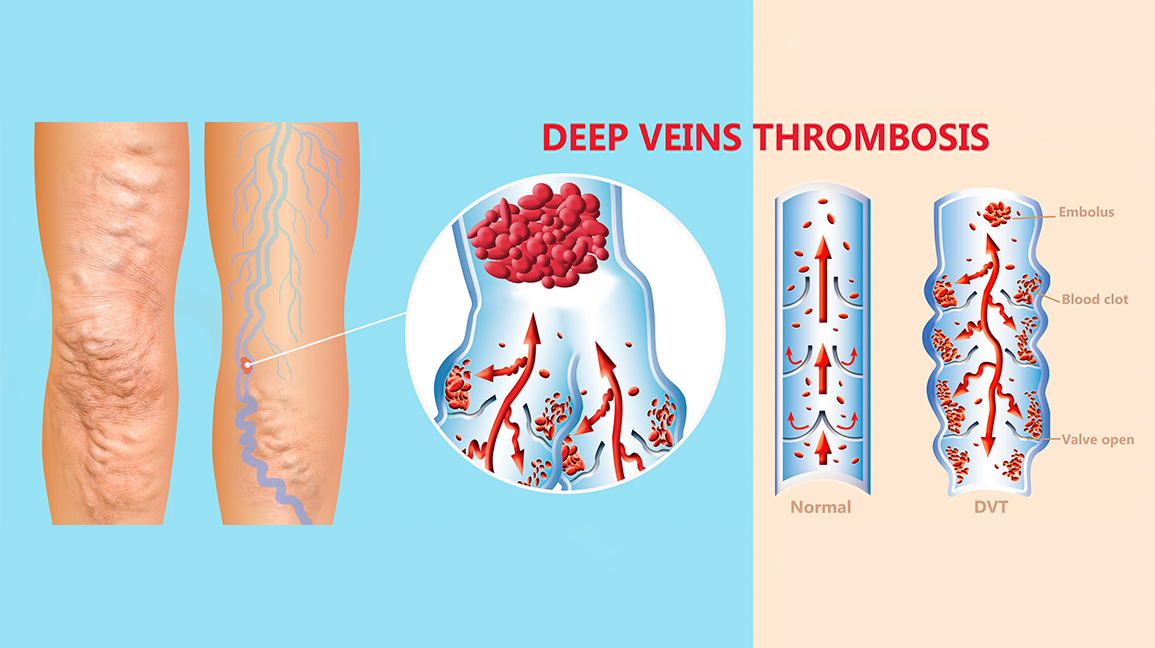
Deep Vein Thrombosis: Know 18 Myths and Facts
Deep vein thrombosis (DVT) is a critical medical concern that affects many people, yet there are loads of misconceptions swirling around it. It’s time we took a closer look at this condition, separating fact from fiction, and diving into the nitty-gritty details.
For more clarifications, you can type hematologist near me in the Google search bar to get the list of the best hematologists near your area. Or else, get in touch with Sierra Hematology & Oncology, located in California.
What Exactly is DVT?
Deep vein thrombosis (DVT) occurs when blood clots form within the deep veins, usually in the legs. These clots can block blood flow, leading to potentially serious complications, like a pulmonary embolism that could even be life-threatening.
Myth 1: DVT Only Strikes the Elderly
Let’s bust this myth wide open! While age can up the risk, DVT doesn’t discriminate. Younger folks with specific risk factors like long periods of sitting, being overweight, or having a family history of clotting issues can also find themselves dealing with DVT.
Myth 2: DVT Always Shows Symptoms
Not quite! About half the time, DVT doesn’t come with any obvious warning signs. Sure, swelling, pain, warmth, and redness in the leg are common signals, but sometimes, the absence of these doesn’t mean you’re in the clear. Regular check-ups are crucial!
Myth 3: Traveling Triggers DVT
Sure, long-haul flights where you’re stuck in your seat for ages can heighten the risk. But guess what? DVT isn’t just a souvenir from your travels. Surgeries, pregnancy, certain meds, and underlying health conditions can also play a part. It’s a mix of factors, not just one thing.
Myth 4: DVT is Only for Women on Birth Control
Not quite! While ladies using hormonal birth control have a slightly higher risk, it’s not a ladies-only club. Men and women with other risk factors like smoking, being overweight, or having a family history of DVT need to keep an eye out too.
Myth 5: DVT Spells Doom
Hold up! If caught early and treated right, DVT isn’t a guaranteed disaster. Most folks with DVT get better with proper care. But if left untreated or if a clot takes a joyride to your lungs, it can get serious. Early detection is key to preventing big problems.
Myth 6: Compression Stockings Don’t Work
False alarm! These stockings are superhero-level helpful. They keep your blood flowing better in your legs, lowering the chances of clots forming. Docs often recommend them for those at risk of DVT or folks bouncing back from surgery. They’re like a shield against trouble!
Myth 7: DVT Picks Just One Leg
Usually, yeah, it hangs out in one leg, but it’s not shy about doubling up. It’s important to know the signs and get help if your legs start acting weird.
Myth 8: Floating Clots? Not a Huge Issue.
Actually, floating clots in certain areas can be a bit risky. When these clots are a certain size, they up the chances of causing more trouble down the line.
Myth 9: DVT Isn’t a Big Deal If You Haven’t Heard of It
That’s a no-go! DVT is a serious business. It hits more than 2 million Americans yearly and causes more trouble than breast cancer, car accidents, and HIV combined. It’s not to be taken lightly!
Myth 10: Fit as a Fiddle Means DVT-Free
Think again! DVT can show up in anyone’s life—whether you’re a gym rat or a couch potato, young or old. It doesn’t play favorites.
Myth 11: Ladies are the Target for Developing DVT
Hold on! Women might be more prone during pregnancy or when on certain meds, but overall, men get hit by DVT more often.
Myth 12: Being Healthy Equals DVT Immunity
Don’t fall for it! Even if you’re under 60 and swear by green smoothies, if you’ve got a family history of DVT, it’s worth keeping an eye out.
Myth 13: Baby Bumps Cause DVT
Fact check! Pregnancy can up the risk due to hormonal changes and the womb-squeezing veins. The risk goes up to 10%, but following a hematology doctor’s advice can help steer clear of trouble.
Myth 14: Once Hit, Always Hit
Nah, that’s not the case! Medications and keeping active help cut the risk. Avoid sitting still for too long and get those legs moving to dodge clots.
Myth 15: Varicose Veins Mean Trouble
Kind of! They mess with good blood flow and could lead to clots, but not everyone with varicose veins gets DVT. Still, it’s worth talking to a hematology doctor.
Myth 16: Leg Pain Means DVT
Not always! Swelling, warmth, and pain are usual suspects, but they could just be muscle woes. When in doubt, a pro’s advice is gold.
Myth 17: Air Travel is a Ticket to DVT
Not quite! Despite the hype, the risk of DVT from flying is significantly low.
Myth 18: DVT’s Just a Looks Thing
It’s not just about appearances! Varicose veins can bring pain, cramps, and swelling, so don’t brush it off.
Wrapping Up
Deep vein thrombosis affects anyone, regardless of age or gender. Understanding the facts, dispelling myths, and regular check-ups are vital for early detection. Compression stockings used correctly, can prevent it. Stay informed to lead a better quality of life.
If you or your loved ones suspect deep vein thrombosis, don’t wait—reach out for help! By typing hematologist near me, perform a Google search. After going through the reviews, make sure to consult the doctor.
If you are located in California, reach out to Sierra Hematology & Oncology for a top-notch, cost-effective treatment without compromising quality. Make sure to consult our doctor for appropriate care in dealing with venous thrombosis. Don't delay; your health matters.
Also Read:
COPD and Lung Cancer: Navigating the Connection for a Better Tomorrow
Bacterial colonization of the microbiome linked to the development of ovarian cancer
These 5 Factors Increase Your Risk for DVT – The Silent Killer

